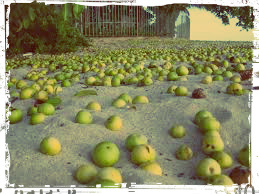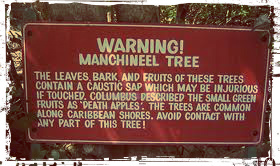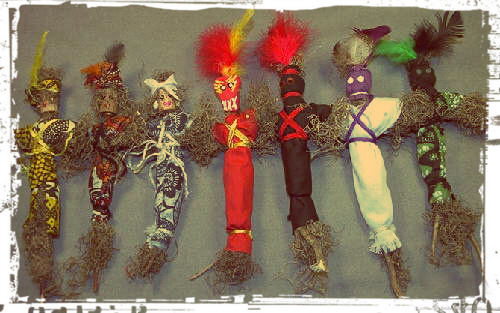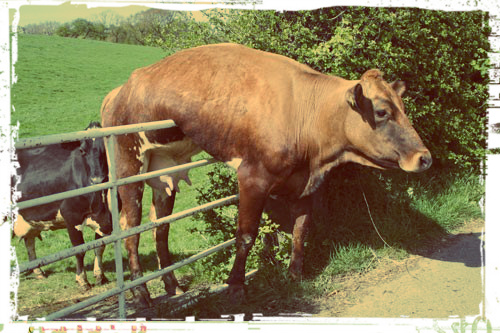“This one has good branching…” Kyle negotiated, trying to sell me on the appeal of the 3 ft tall Charlie Brown stick figure he had his hand around, as he considered digging it up for me.
Perched on a boulder, I made a face and whined that I wanted something – anything – that was actually alive and had leaves.
While I had fully planned on helping out when we set-off, the sweltering humidity and the mosquitoes cut me off at my good intentions, and we had quickly reverted back to our childhood roles: me, directing my brother about like one of my minions, and he, concealing what little annoyance he harbored to indulge my wishes, true to his ever-accommodating younger sibling nature.
The idea had sounded fun in its inception: having had little luck in getting non-native plants from the nursery to grow in pots on my patio, Kyle, a landscape architect and perennial green thumb, decided that perhaps I might have more success with some indigenous plants that were better suited for the harsh tropical climate. So we threw some buckets, a shovel, a machete, and a hoe into the Whaler and putted over to the uninhabited island across the channel.
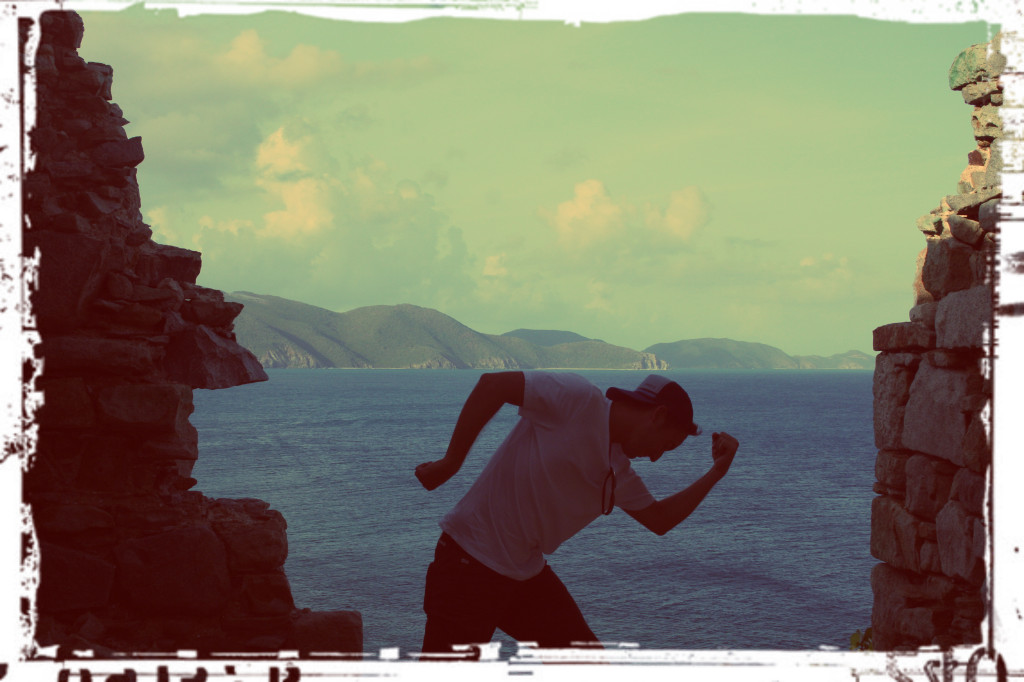
Digging up plants makes Kyle feel mighty
Unfortunately, finding native plants to transplant was only genius in theory. Most were deeply rooted into rocks or perched precariously on inaccessible cliffs. It was slim pickins and in the end, we left with only a couple lackluster options: some brown beach grass as a filler, a couple fuzzy-leafed bushes that smelled sage-y, and the “tree” with the “good branching”.
Once potted and on my patio, they looked not too dissimilar from my failed nursery plants – brown, wilting, and potentially devoid of life. I was dubious, but Kyle believed they’d grow in time. And, much to my surprise, they did.
It turns out that all the stick wanted was some water and a wee taste of fertilizer. No longer fighting for its life in the parched desert island landscape, the stick figure transformed into an actual tree, flourishing in its pot, growing thicker with leaves and greener with each passing month. My dose of delight came in extra-strength – it was alive! and more importantly, I (me!!) was no longer a serial plant murderer. In an unpredictable twist, it turns out that I’m much better at bringing dying plants back to life than I am at keeping healthy plants, fresh from the nursery, from dying. Go figure. I shall choose to ignore any inherent symbolism with regards to my life, in general.
A year later, I continued to marvel at the tree’s impressive metamorphosis. Now, a towering 5 ft tall, thick-trunked behemoth, it was unrecognizable from where it had began. And damn, did it have good branching.
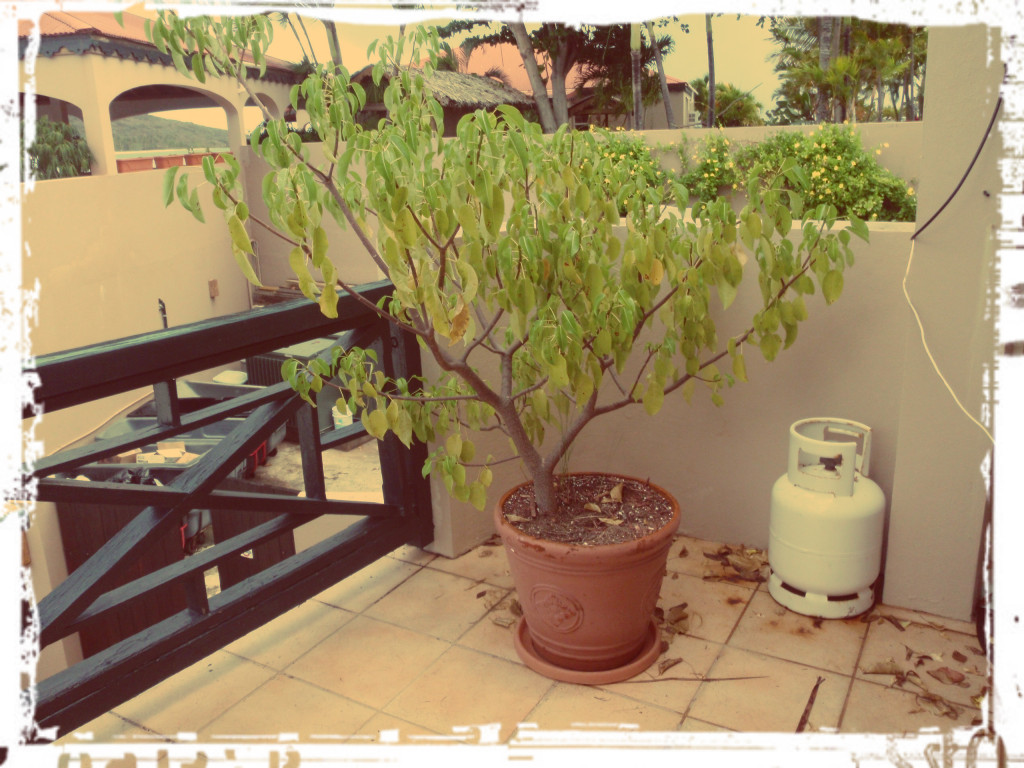
The stick became a tree!
One day, Johnny Mango, the resort’s maintenance man, pulled me aside and with an incredulous look, asked me what I was doing with the tree on my patio.
“Isn’t it amazing?!” I beamed, already glowing from the unsolicited flattery that was surely about to commence re: my gardening skills. “And would you look at that branching?!”
He grimaced and pointed an accusatory finger at the tree in question. “Where did you get that? That’s Manchioneel, poison tree. Someone going to get burned by that tree.” He walked off, giving a final shake of his head. It was the head shake I’ve come to know all too well – the one I receive whenever I somehow baffle a local with my crazy expat antics (talking to animals, jumping up and down when I get excited, doing yoga on my paddleboard, you get the picture).
I ran into the house to investigate. I had tried to determine the tree’s species before to no avail. But now that I had a name – BAM – Google delivered.
Johnny Mango’s claims were confirmed. I had myself a Manchioneel tree – native to Florida, the Bahamas, Central and South America, and the Caribbean and widely known as one of the most poisonous trees in the world. Apparently, everything about this tree is toxic as shit – its sap, if it drips on you, can produce caustic blistering; if its wood is burned, the asphyxiating smoke can cause blindness; if its leaves get into your water supply, it can cause severe stomach issues; and – worst of all – the tree produces an apple that, if eaten, can kill you. Its Spanish name is manzanilla de la muerte – literal translation: little apple of death. In more litigious locales, these trees are required to bear a sign telling people not to stand under them when it rains, or at the very least, a painted red X to warn people of their overall danger.
I shuddered at my desk, realizing that I had narrowly avoided death by apple. The Universe (or just pure, dumb luck) had protected me by not allowing my tree, which was otherwise the picture of perfect health, to produce fruit as of yet. For if I know myself (and I believe I do), I would have picked the apples, danced with the delight of Rumpelstiltskin, and would have eaten them immediately. I would have boiled over in the pride of growing my very own organic apples, Instagrammed it (#homegrown #naturerocks #nomnomnom), and succumbed to the demise of a Disney princess. My brother, having only himself to blame, would have had to live the rest of his days wallowing in misery, telling anyone who would listen that he had poisoned his only beloved sister, however inadvertently.
Staring out to the patio, my own Little Shop of Horrors, I was faced with a mortal conundrum. Now afraid to so much as brush against the wicked tree, I had no choice but to keep caring for it as I had been. Only now, I watered it with an outstretched arm, careful to avoid contact, and gave it a wide berth at the slightest hint of a drizzle. I imagine the combination of love/fear/respect I harbor for it is akin to those nuts out there who find it fascinating to keep venomous snakes as pets. I know you can kill me, and yet I love you all the more. Please, don’t kill me though…
Two years later, we were moving islands and the magnificent tree fell on the list of things I simply couldn’t part with. After laying on a thick layer of charm and bribery, I was finally able to convince the men to help me move it. We carefully chose a day with no rain in the forecast and moved the tree with the grave caution that one might give a ticking bomb. It made it across the islands, leaving only a few minor casualties in its wake – burns to my arms and unfortunately for dear Jose, his face.
Upon meeting the landscaper at the new house, his first order of business was to lecture me in much the same way as Johnny Mango had. Baffled that this crazy expat had not only potted this poison tree, but had moved it across islands via boat and truck, and now was asking him to remember to water it, the head shaking began. He squinted his eyes and appraised me as people do when they’re trying to ascertain just how crazy the person before them actually is. He looked at me, he looked at the tree, shook his head, and walked away.
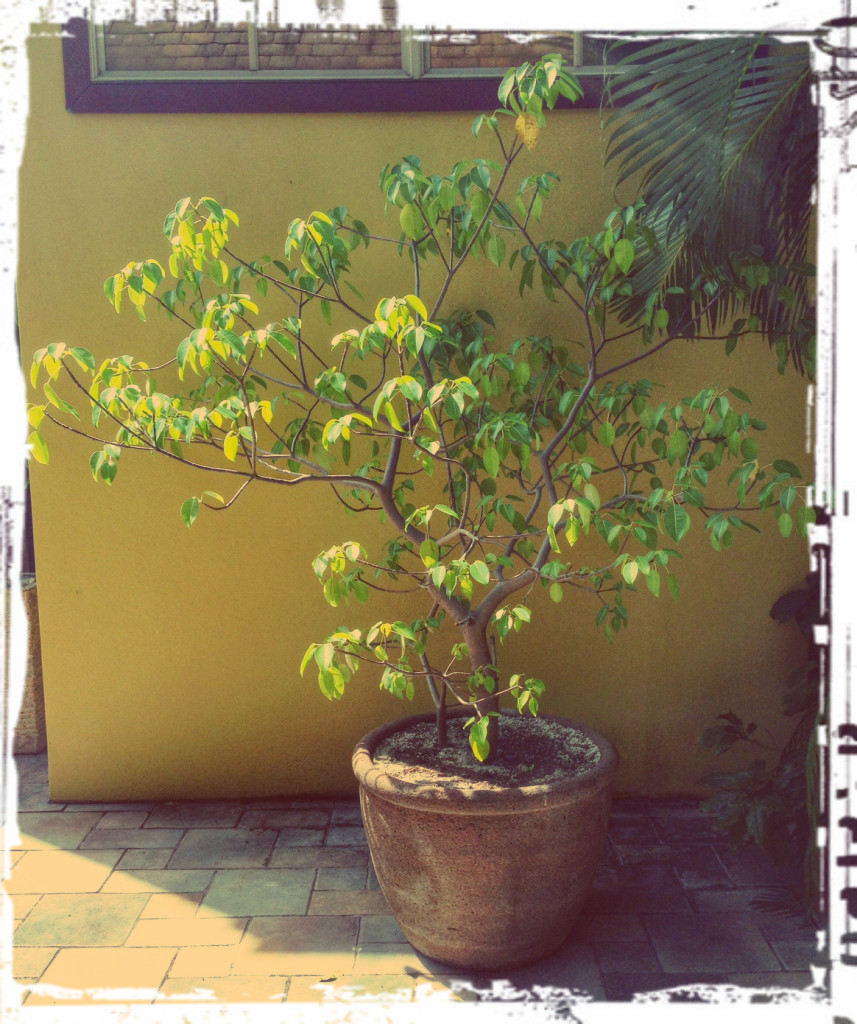
My Magnificent Manchioneel – would you look at that branching?!

